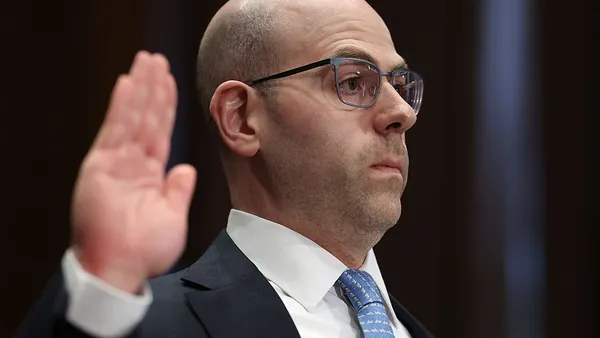Once an M&A deal is inked, the future of employees at the targeted company is often called into question — even CFOs can suddenly find themselves on shaky ground.
Indeed, if a company is acquired in a private equity-driven transaction, there’s a good chance that the sitting finance chief will have left the company within the first year, according to Connor Augustyn, director of financial operations and PE at Chicago, Illinois-based West Monroe, a consultancy firm that often works with private equity firms.
“It’s a tall task to ask a CFO who isn’t seasoned to be ready to grow and scale,” Augustyn said in a recent interview. Instead, PEs often have a preferred Rolodex of so-called “fly-in CFOs,” who are familiar with the demands and skills needed to run the finance department in the PE climate, which typically demands more information and quicker closes.
The strategy behind picking a veteran M&A CFO is similar to other specific corporate situations where a certain type of finance leader is needed. For example, distressed firms facing bankruptcy often look for a CFO who is familiar with the court process: home-goods retailer Bed Bath and Beyond, tapped Holly Etlin, a managing director at AlixPartners, as interim CFO in February of 2023 and subsequently named her as CFO and chief restructuring officer just before filing for bankruptcy protection in April 2023.
Still, there are a mix of scenarios with regard to how the leadership transition typically plays out, a shortage of seasoned fly-in CFOs and other factors that could enable some finance leaders to chart a fresh course at the newly acquired firm.
Augustyn said CFOs on the sell side need to make sure they have a road map for handing the company over to the next buyer. That could include knowing if their firm needs to replace its ERP system. “For CFOs on the sell side a lot of their job is making sure their back office functions are in order,” he said. “And you are wanting to showcase and highlight that you do have additional room and ability to scale.”
Finance leaders of small companies should also make sure their earnings information is solid and understand what areas that may draw questions. Buyers will do their own presale due diligence and target companies need to be up-front and prepared.
“You don’t want them to find anything that you don’t already know,” Augystyn said. The deal process can be stressful and chaotic for CFOs of smaller companies being acquired but learning about the process can put you in a better position.
“If you’re in the first-time seller position, doing your homework up front to understand the transaction process shows maturity and forward thinking,” Augustyn said. And even if that doesn’t lead CFOs to retain their post, if they have proven themselves there may still be other options at the new firm, Augustyne said. For example, they could stay on and move to the controller position, he said.
To be sure, it’s not clear how many finance chiefs will find themselves in a buyers’ crosshairs in the second half of the year as the jury is still out on what the M&A recovery will look like. Globally during the first half, the value of M&A deals rose by 5% compared with the first half of 2023, but overall transaction volume fell by 30%, according to a midyear report by PwC. Now, “after high hopes in January of an upswing in dealmaking activity, a thick fog of uncertainty descended on M&A markets,” the PwC report stated, adding that it’s expected there will still be an M&A bounce back but it will likely take hold faster in some sectors than in others.















